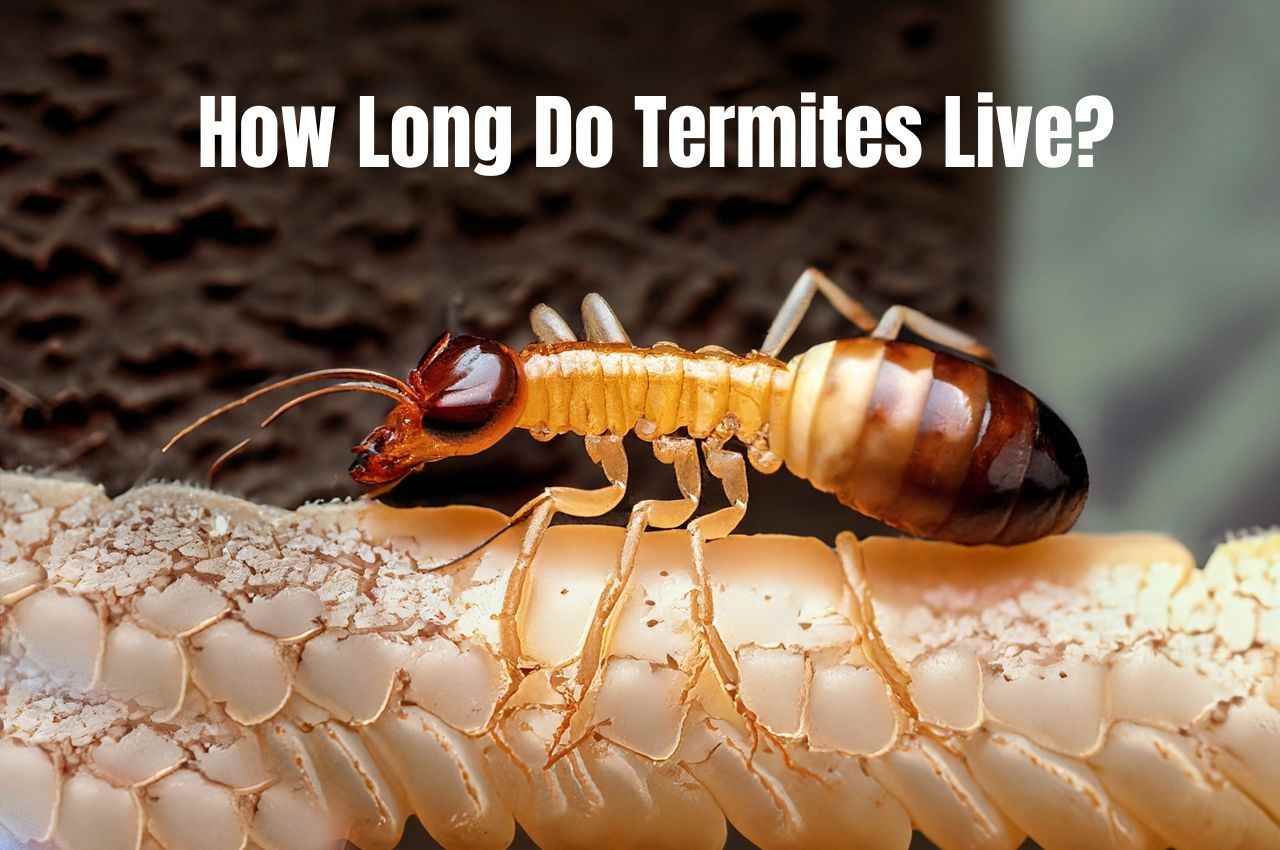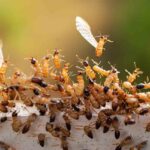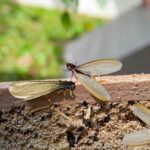In order to effectively control pests and avoid damage, it is essential to understand How Long Do Termite Live. In this quick guide, we’ll dig into the fascinating topic of termite lifespans, addressing commonly asked concerns about these wood-eating bugs as well as their life phases, variables that affect their longevity, and more.
How long termite live?
Termite caste and species have very different life periods. Termite queens have the longest lifespans, sometimes up to 30 years, since they are responsible for laying eggs that help the colony remain healthy and thrive. While serving the queen and colony, worker and soldier termites have a short lifespan of approximately one to two years. If left untreated for years, a mature termite colony with a long-lived queen may number millions and cause ongoing, increasing damage to wood structures.
The average lives of several termite species are listed below:
| Termite Type | Average Lifespan |
|---|---|
| Queen | 10-30 years |
| King | 10-20 years |
| Reproductive Alates | Hours to a few days |
| Secondary Reproductives | 1-2 years |
| Soldiers | 1-2 years |
| Workers | 1-2 years |
Detailed Lifespan of Termite Castes in Common Termite Species
| Termite Caste | Worker Termites | Soldier Termites | Reproductive Alates |
|---|---|---|---|
| Subterranean Termites | 1-2 years | 1-2 years | Hours to a few days |
| Drywood Termites | 2-5 years | 2-5 years | Hours to a day |
| Formosan Termites | 1-2 years | 1-2 years | Hours to a day |
| Dampwood Termites | Up to 2 years | Up to 2 years | Hours to a day |
Average Queen Lifespans by Termite Species
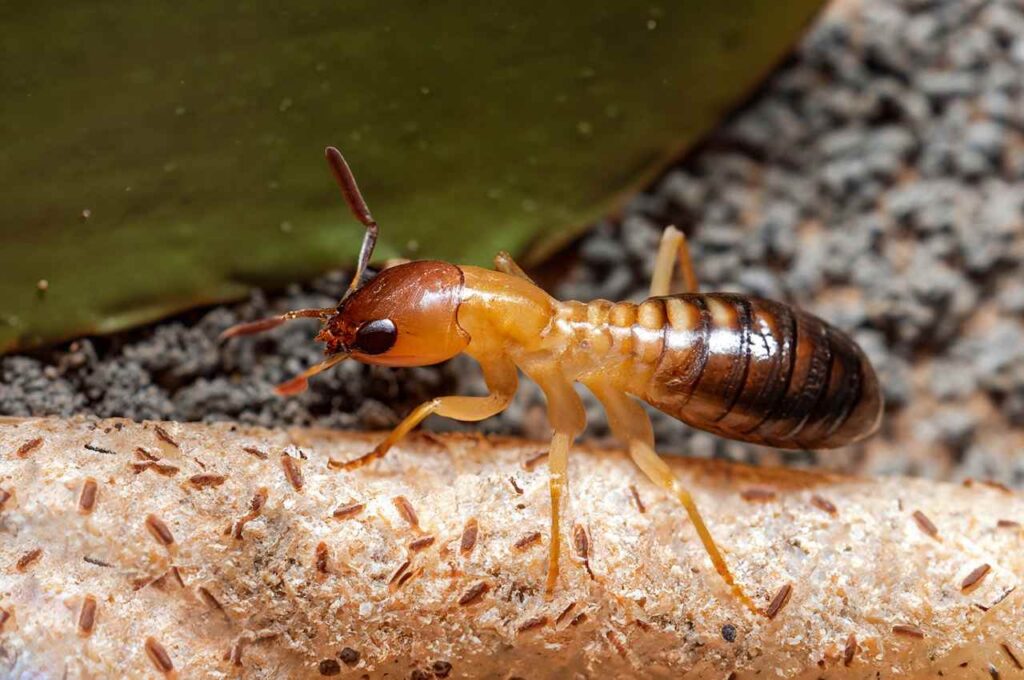
| Termite Species | Average Queen Lifespan |
|---|---|
| Eastern Subterranean | Up to 30 years |
| Formosan Subterranean | 15-20 years |
| Western Subterranean | 10-15 years |
| Dampwood | 10-15 years |
| Drywood | 10-12 years |
| Mound-Building (Africa) | Up to 60 years |
Termite Colony Growth Over Time
| Time Frame | Description |
|---|---|
| 0-5 years | Initial egg laying, <50 termites |
| 5-10 years | Moderate growth, 50-500 termites |
| 10-15 years | Accelerated growth, 500-5,000 termites |
| 15-25 years | Maximum size, >10,000 termites |
| 25-30 years | Decline after queen dies |
Queen Egg Laying Capacity
| Termite Species | Eggs Per Day |
|---|---|
| Eastern Subterranean | Up to 1,000 |
| Formosan Subterranean | 1,000-2,000 |
| Western Subterranean | 100-500 |
| Dampwood | 50-100 |
| Drywood | 5-20 |
Termite Lifecycle
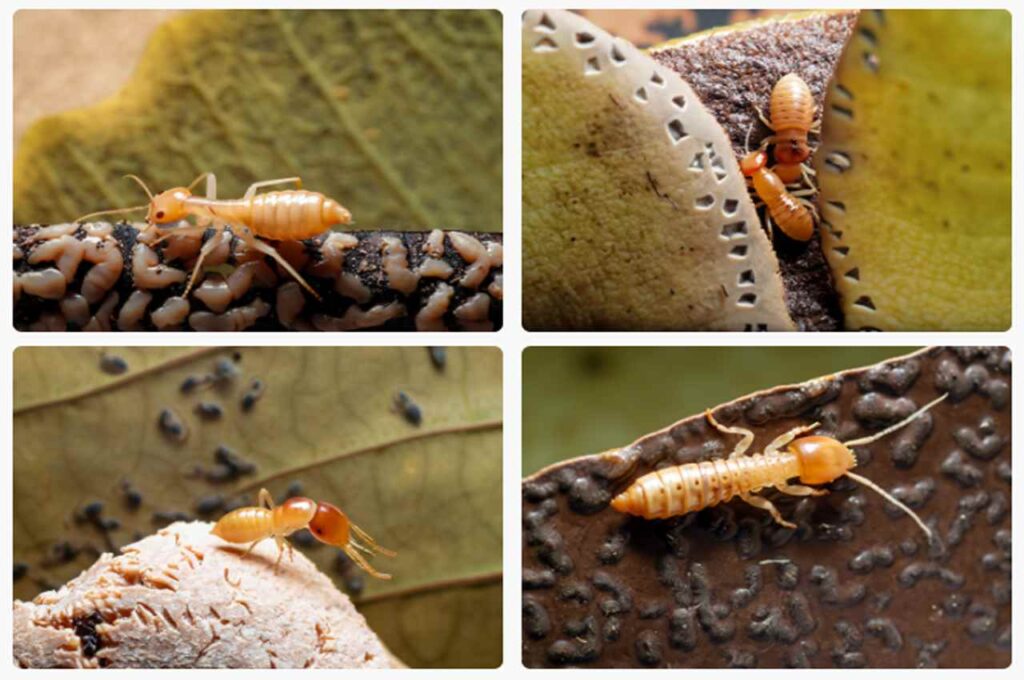
Key Stages in a Termite’s Life Cycle
| Stage | Description | Duration |
|---|---|---|
| Egg | Laid by queen | 25-30 days |
| Larva | Feed and grow | Several weeks |
| Nymph | Develop into different castes | Several molts over months |
| Adult | Achieve mature caste form | 1-30 years depending on caste |
Termite Life Stages
The extraordinary trip that termites take through their numerous life phases is essential to the survival and well-being of their colony.
Termites are born as eggs that are deposited by the queen termite. Depending on the circumstances, these small, virtually transparent eggs usually hatch within weeks.
- Termite nymphs emerge after hatching during the nymph stage. These young termites resemble little adult termites, but they are incapable of reproducing. Nymphs are essential in taking care of the colony’s requirements, including feeding, building tunnels, and maintaining nests.
- Worker Stage: As nymphs develop, they become worker termites, the colony’s real labor force. Worker termites carry out a variety of activities, including as searching for food, digging tunnels, and caring for the queen and king. Depending on the species, termites have lives of one to two years.
- Soldier Stage: In certain species of termite, nymphs develop into soldiers with powerful jaws for defense. Soldier termites are largely in charge of protecting the colony, but they may also survive for a long time, assuring the colony’s safety.
- Reproductive Stage: A chosen group of termites transforms into winged reproductive termites known as alates. These alates are essential for colony survival because they swarm to build new colonies and locate mates. The shortest-living termites are reproductive ones, which can only endure swarming activities for a few days to a few hours.
Factors Influencing Termite Lifespan
Numerous variables, such as the following, might affect termite lifespan:
- Species: The life lengths of various termite species vary, with subterranean termites having shorter lives than drywood termites.
- Environment: Temperature, humidity, and the availability of food all have a substantial influence on termite lifetime.
- Colony Size: Due to their ability to guard the queen, monarch, and a sizable workforce, larger colonies often live longer.
- Natural predators may dramatically shorten termite lifespans, including ants and certain birds.
| Factor | Effect on Life Span |
|---|---|
| Temperature | Higher temps shorten life span |
| Humidity | Needed for survival, ideal is ~80% RH |
| Food Availability | Plentiful food extends life span |
| Disease | Fungal pathogens can shorten life |
| Predators | Ants, reptiles, etc. reduce survival |
| Insecticides | Chemical treatments reduce life span |
Average Lifespan of Common Termite Species
Effective termite control requires an understanding of the typical lifetime of the most common termite species. Here is a summary of the life lengths of several common termites:
- Subterranean Termites: While reproductive alates may only survive a few hours to a few days during swarming, worker termites of subterranean species may live for up to two years.
- Worker termites typically live between two and five years in drywood termites, which have longer life spans than their subterranean counterparts.
- Formosan Termites: Worker termites of the notoriously aggressive formosan termite species live one to two years.
- Dampwood termites have relatively short lifespans, with worker termites surviving up to two years on average. They thrive on wet wood.
Conclusion
In conclusion, termite lifespans vary significantly depending on caste and species. Termite queens, as previously stated, have the greatest life spans, with certain species, like the Eastern subterranean queen, reaching 30-year lifespans. To sustain and develop mature colonies, long-lived queens produce hundreds to thousands of eggs every day. Worker and soldier termites only survive one to two years because they are constantly serving the queen. Castes’ life expectancies vary depending on their occupations and heredity. It is clear that mature termite colonies left unattended might ruin property for many years. Homeowners should keep an eye out for termite activity and contact experts at the earliest indication to save costs. It is essential to take action to control these pervasive bugs, which silently reside in structural timbers.
Frequently Asked Questions
How long can a termite queen live?
Of all the castes, termite queens have the longest life spans. Termite queen lifespans normally vary from 10 to 30 years depending on the species, with some African mound-building termite queens living up to 60 years. Due of her lengthy lifespan, the queen may continually produce eggs to support and grow the colony. For instance, drywood termite queens often live 10 to 12 years, but Eastern subterranean termite queens might live up to 30 years. The queen is the caste that is most crucial to the colony’s long-term expansion and survival.
What is the average lifespan of worker termites?
Worker termites live just 1-2 years on average, which is a much shorter lifespan than queens. They must work nonstop to support the queen and colony by foraging, creating new tunnels, providing food for other termites, and caring for the nest until they die. Although short in comparison to other castes, this 1-2 year lifetime enables workers to carry out significant tasks that aid the colony’s production and growth.
How does the lifespan of termites impact the potential for property damage?
Termite colonies may expand to extremely huge proportions with millions of workers over the course of years or decades because to the termite queens’ extended lifespans. This implies that a termite colony may consume and harm wooden buildings continually for a very long time. Termites may gradually erode buildings and cause degradation if an infestation is not discovered and treated. The longer the infestation lasts, the more money it will take to remedy termite damage. Early colony detection and destruction is essential to averting severe harm.
What factors influence the lifespan differences between termite castes?
The disparities in longevity are brought on by the different physiologies and functions of each caste. The queen lives a long time to lay eggs since her only function is reproduction. To defend the colony, soldiers have physical defenses like big mandibles. Workers have simpler bodies that are more suited to laborious jobs than to extended life. The queen’s health and survival, as the only member of the fertile caste, also have a significant impact on the expansion and durability of the colony. The queen’s remarkable lifetime is necessary for her to continue producing eggs.
Do all termites live the same?
The lifespans of termites vary greatly. Although there are around 2,000 termite species in the globe, subterranean, drywood, and dampwood termites are the most common. These animals’ social and physical characteristics have an impact on how long they live. While Eastern subterranean termites have shorter queens, African mound-building termites have very long queens.
Do reproductive termites play a significant role in the colony and have a longer lifespan than other castes?
Alates (winged reproductives) and secondary reproductives, two types of reproductive termites, are essential to the survival of the colony. Alates may establish new colonies thanks to swarming flights, albeit they only live for a few hours to a few days. However, secondary reproductives are necessary for colony survival. When the primary queen is unable to produce eggs, they could. Their lifespans are matched to their reproductive duties, ensuring the survival of the colony.
How can homeowners protect against damage from long-lived termite colonies?
Homeowners should keep an eye out for termite damage warning signs like mud tubes and schedule expert inspections once a year, or more often if they live in a high-risk area. Infestations should be treated as soon as they are discovered to prevent massive colonial growth. Eliminating soil contact with wood, controlling moisture, and applying termiticide treatments are all preventative strategies that lessen the likelihood of termites remaining in the house for an extended period of time and consuming its wooden components.
- How do termite mounds help regulate temperature? - 7 January 2024
- 10 Effective Termite Control Methods That Actually Work - 4 January 2024
- How Long Does It Take for a Termite Mound to Form? - 21 December 2023
